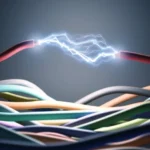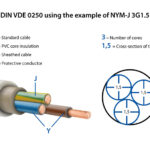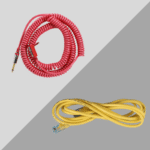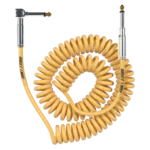An optical cable, also known as a fiber optic cable, is a type of cable that uses light to transmit data. Unlike traditional copper cables, which transmit electrical signals, optical cables send data in the form of light pulses through glass or plastic fibers. These cables are commonly used for high-speed data transmission over long distances, making them essential in modern communication networks, internet connections, and even in applications like home entertainment and medical equipment.
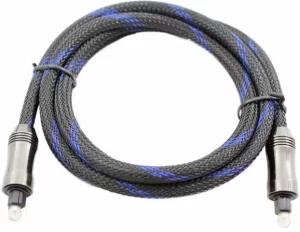
what is an optical cable
Key Features of Optical Cables
Structure:
Core: The central part of an optical cable is the core, made of glass or plastic fibers, which carry the light signals. The core's diameter can vary, but it is typically very small—around 8-10 microns for single-mode fibers and 50-100 microns for multi-mode fibers.
Cladding: Surrounding the core is a layer called the cladding, made of a material with a lower refractive index than the core. This cladding keeps the light inside the core through total internal reflection, ensuring that the light signals travel along the cable without escaping.
Jacket: The outermost layer, known as the jacket, is a protective cover that shields the cable from physical damage, moisture, and environmental factors. The jacket is usually made from PVC or polyurethane and can be color-coded to indicate the type of cable.
Types of Optical Cables:
Single-Mode Fiber (SMF): These cables are designed for long-distance data transmission. They have a very narrow core, typically around 8-10 microns in diameter, which allows light to travel in a single path (mode), minimizing signal loss over long distances. Single-mode fiber is often used for telecommunication networks and high-speed internet connections.
Multi-Mode Fiber (MMF): These cables have a larger core, typically 50-100 microns in diameter, which allows light to travel in multiple paths (modes). While they are better suited for shorter distances (such as within a building or local area network), they are often used in data centers and local area networks (LANs).
Advantages of Optical Cables:
High-Speed Data Transmission: Optical cables can transmit data at significantly higher speeds compared to copper cables. This is why fiber optics are often used for high-speed internet, telecommunications, and data centers.
Long-Distance Transmission: Optical cables can carry signals over longer distances without losing quality or speed. Unlike copper cables, which experience signal degradation over long distances, optical cables can transmit data for miles without requiring signal boosters.
Immunity to Electromagnetic Interference (EMI): Since optical cables transmit light instead of electrical signals, they are immune to electromagnetic interference (EMI). This makes them ideal for use in environments with high levels of electrical noise or interference, such as factories or medical facilities.
Security: Fiber optic cables are more secure than traditional copper cables because it’s much harder to tap into a fiber optic cable and intercept the data. This makes optical cables a preferred choice for sensitive data transmission.
Bandwidth Capacity: Optical cables have an extremely high bandwidth capacity, which allows them to carry vast amounts of data simultaneously, making them ideal for high-traffic applications like streaming, cloud services, and video conferencing.
Applications of Optical Cables:
Telecommunications: Optical cables are widely used in telecommunications networks for providing internet, phone, and television services. Their ability to carry large amounts of data over long distances makes them the backbone of modern communication infrastructure.
Internet and Data Services: Optical cables are used in fiber-optic broadband internet connections, enabling high-speed internet for residential and business customers.
Data Centers: In data centers, optical cables are used for connecting servers and storage systems, allowing for quick data transfer across the entire network.
Medical Applications: Optical cables are also used in medical equipment, such as in endoscopes, where the light is transmitted through fiber optics to illuminate the inside of the human body.
Home Entertainment: Fiber optic cables are commonly used in home audio and video systems, transmitting high-quality sound and video signals with minimal loss of quality.
Durability and Reliability:
Weather Resistance: Optical cables are often more weather-resistant than traditional copper cables, making them suitable for both indoor and outdoor use. Outdoor optical cables often come with extra protective coatings to shield them from harsh environmental conditions.
Lightweight: Optical cables are typically lighter than copper cables, which makes installation easier and reduces the risk of damage during setup.
Conclusion:
An optical cable is a high-performance data transmission solution that uses light to transfer information through glass or plastic fibers. It provides a fast, secure, and high-bandwidth means of communication, with applications in everything from telecommunications and internet services to data centers and medical devices. Whether you're setting up a high-speed internet connection, building a network infrastructure, or upgrading your home entertainment system, optical cables are the preferred choice for high-performance, long-distance, and interference-free data transmission.

